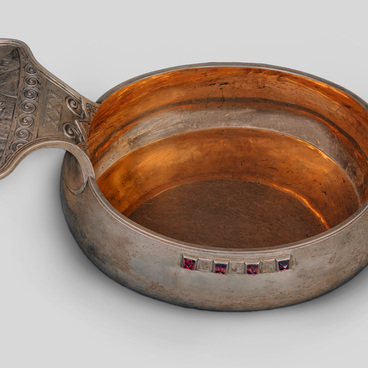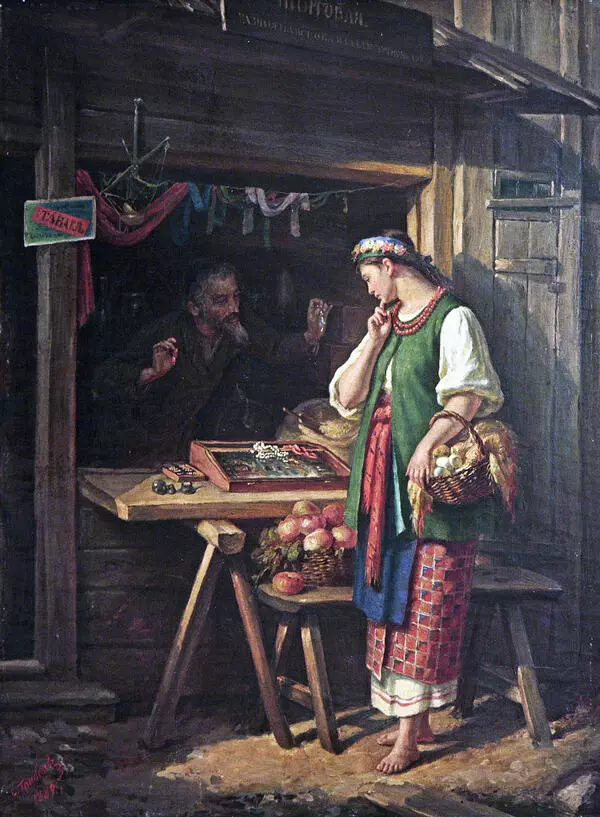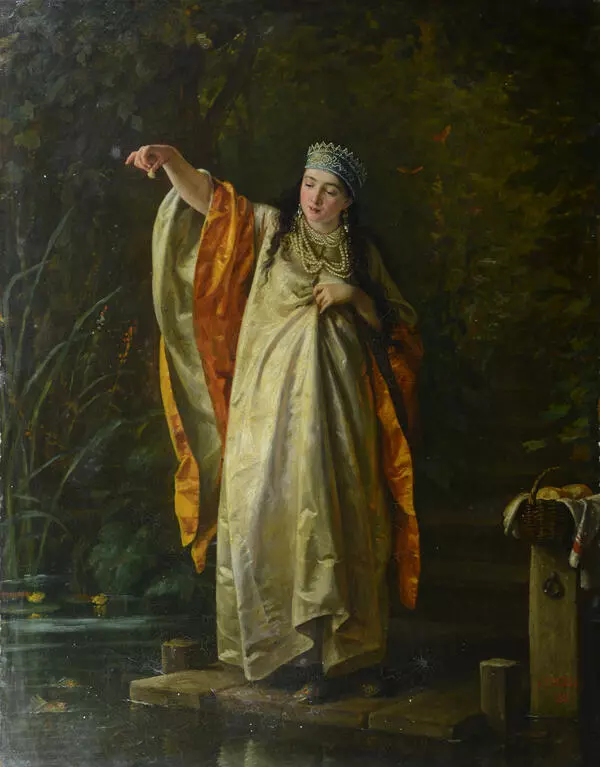The art collection of the Ivanovo Museum of Local History named after Dmitry Burylin presents the painting “Jealousy of Rogneda” by the 19th-century Russian artist Sergey Gribkov.
The canvas features the same historical plot as the artist’s other work — “Vladimir and Rogneda”. The subject matter of the painting is based on the events of the 10th century, described in the Laurentian Chronicle.
The painting shows a young, beautiful princess Rogneda — the daughter of Rogvolod, the Prince of Polotsk. She was engaged to Vladimir’s elder brother Yaropolk. Vladimir also asked for Rogneda’s hand but was rejected. According to one version, Vladimir was refused because he was the illegitimate son, born out of his father’s relations with a concubine ,and was thus of low birth. In 980, captivated by Rogneda’s beauty and insulted by her refusal, Vladimir attacked Polotsk, killed Rogneda’s father and brothers, and married her against her will.
In old Rus (before the Christianization), polygamous marriages were allowed in princely families, so Rogneda was not Vladimir’s first wife. The details described in the chronicles can be proved beyond doubt by the information on the short duration of Rogneda and Vladimir’s marriage (from the first half of 978 till 988), her status as a wife living outside the grand-princely court, Vladimir’s three pagan marriages later in time (to “a Greek woman”, “a Czech woman” and “a Bulgarian woman”) and relations with 800 concubines. The princess, who first had to endure the death of her brothers and father, suffered a great blow to her pride and was humiliated by her situation. For a long time, she had been nurturing a plan of revenge against Vladimir in her heart, and finally, she built up the courage to kill him. But her plan was destined to fail because Vladimir suddenly woke up before she had the chance to attack him and decided to execute Rogneda for her actions. The canvas captured this exact moment: Rogneda bent over her sleeping husband with a dagger.
The figures of Rogneda and Vladimir are placed in
the bedroom, crowned with descending waves of dark curtains and a rectangular
window showing the night sky. The artist put the emphasis on fabrics. Soft
directional light and transitions between colors create the illusion of a “real”
body. Art historians believe that Gribkov was influenced by Alexander Serov’s
opera “Rogneda”, which premiered in Saint Petersburg in 1865 and Moscow in
1868. It is assumed that the canvas depicts the crucial moment of the opera’s fourth
act. However, it is still debated whether the real actors were used as
prototypes for the characters in the paintings.







